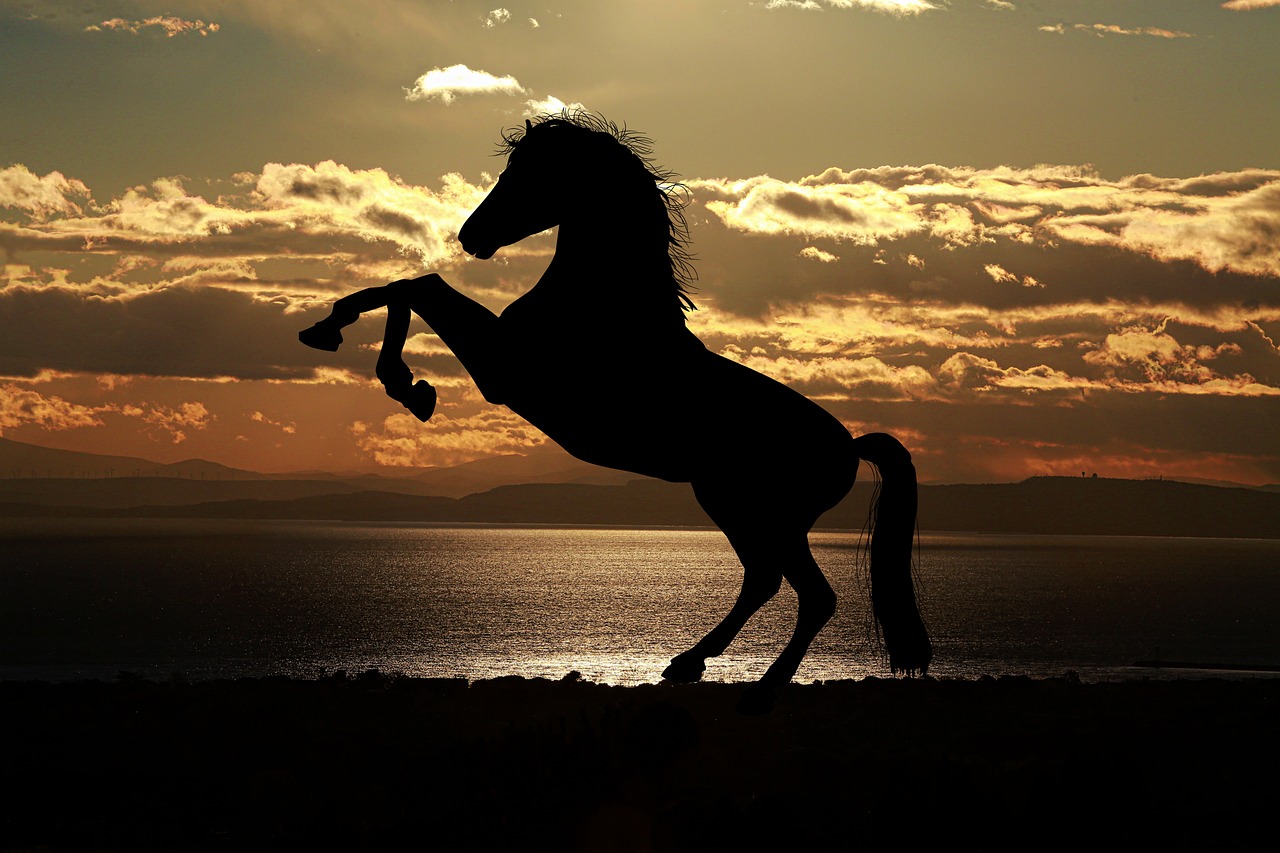Horse
Summarise the information by selecting and reporting the main features, and make comparisons where relevant.
The diagram displays the biological changes that the modern horse has undergone, starting from 40 million years ago, delineating detailed visuals of the foot. Overall, the most prominent changes include the increase in total body size, the development of the mane on top of the neck, and the dramatic transformation in the structure of the foot.
The earliest ancestor of the horse shown in the diagram is the Eohippus, which used to exist 40 million years ago. Compared to its modern descendant, the Eohippus had a considerably smaller body size. There was not a visible mane on the neck and the hair of the tail was much shorter. Additionally, its foot featured four toes, similar in bone structure, length, and circumference.
Ten million years later, the next link of evolution, the Mesohippus, emerged. It is described to have had longer limbs, neck, and, snout than its predecessor. Moreover, a short mane appeared on top of its neck. Most notably, there were only three toes on its foot, with the middle toe having the last phalanx significantly larger than the others.
The latest ancestor of the current horse, the Merychipppus, walked the Earth 15 million years ago. An evolution pattern similar to that of the previous stage could be observed which is a further increase in the size of the mane and the middle toe.
Looking finally at the modern horse, it is much larger in size than its ancestors and sports remarkably longer hair on its mane and its tail. The horse of today has only one toe, as others have disappeared, and the last phalanx of this toe has become a large round hoof.
Essay Breakdown
Structure:
Introduction:
[1] The diagram displays the biological changes that the modern horse has undergone, starting from 40 million years ago, delineating detailed visuals of the foot. [2] Overall, the most prominent changes include the increase in total body size, the development of the mane on top of the neck, and the dramatic transformation in the structure of the foot.
- Summarize what the process details – focusing on the form of the foot.
- Write an overview delineating the overall changes, developments, and major transformations of the horse.
Body 1:
[1] The earliest ancestor of the horse shown in the diagram is the Eohippus, which used to exist 40 million years ago. [2] Compared to its modern descendant, the Eohippus had a considerably smaller body size. [3] There was not a visible mane on the neck and the hair of the tail was much shorter. [4] Additionally, its foot featured four toes, similar in bone structure, length, and circumference.
- Introduce the initial horse. (Eohippus)
- Make a comparison with the modern horse, mentioning the differences between the two horses
- Continue to describe the details of the targeted horse.
- Detail the changes in the horse’s foot.
Body 2:
[1] Ten million years later, the next link of evolution, the Mesohippus, emerged. [2] It is described to have had longer limbs, neck, and, snout than its predecessor. [3] Moreover, a short mane appeared on top of its neck. [4] Most notably, there were only three toes on its foot, with the middle toe having the last phalanx significantly larger than the others.
- Introduce the next horse of the evolution process. (Mesohippus)
- Make a comparison between the targeted horse and the one from the previous phase, mentioning the new developments of the new horse compared with the old one.
- Continue to display detailed features of the targeted horse.
- Detail the dominant transformations of the structure of the foot.
Body 3:
[1] The latest ancestor of the current horse, the Merychipppus, walked the Earth 15 million years ago. [2] An evolution pattern similar to that of the previous stage could be observed which is a further increase in the size of the mane and the middle toe.
- Introduce the nearest version of the modern horse. (Merychipppus)
- Detail the similarities and differences of this one compared to the previous horses.
Body 4:
[1] Looking finally at the modern horse, it is much larger in size than its ancestors and sports remarkably longer hair on its mane and its tail. [2] The horse of today has only one toe, as others have disappeared, and the last phalanx of this toe has become a large round hoof.
- Introduce the differences of the last horse of the evolution process.
- Describe the elimination of some specific parts of the foot and the final visual of the modern horse’s foot.
Vocabulary:
The diagram displays the biological changes that the modern horse has undergone, starting from 40 million years ago, delineating detailed visuals of the foot. Overall, the most prominent changes include the increase in total body size, the development of the mane on top of the neck, and the dramatic transformation in the structure of the foot.
The earliest ancestor of the horse shown in the diagram is the Eohippus, which used to exist 40 million years ago. Compared to its modern descendant, the Eohippus had a considerably smaller body size. There was not a visible mane on the neck and the hair of the tail was much shorter. Additionally, its foot featured four toes, similar in bone structure, length, and circumference.
Ten million years later, the next link of evolution, the Mesohippus, emerged. It is described to have had longer limbs, neck, and, snout than its predecessor. Moreover, a short mane appeared on top of its neck. Most notably, there were only three toes on its foot, with the middle toe having the last phalanx significantly larger than the others.
The latest ancestor of the current horse, the Merychipppus, walked the Earth 15 million years ago. An evolution pattern similar to that of the previous stage could be observed which is a further increase in the size of the mane and the middle toe.
Looking finally at the modern horse, it is much larger in size than its ancestors and sports remarkably longer hair on its mane and its tail. The horse of today has only one toe, as others have disappeared, and the last phalanx of this toe has become a large round hoof.
Vocabulary Highlight:
- biological changes: The genetic changes taking place in a population inherited over a few generations
- delineate (v): to describe, to show
- prominent changes: important changes
- mane (n): the long hair on the neck of a horse or a lion
- ancestor – descendant (n): previous generation – later generation (forebear – offspring)
- feature (v): include a particular thing as a special feature
- circumference (n): the outside edge of an area or object that is round or curved, or the length of this edge
- emerge (v): to become known
- limb (n): an arm or a leg; a similar part of an animal, such as a wing
- snout (n): the long nose and area around the mouth of some types of animal, such as a pig
- predecessor (n): a person who did a job before somebody else
- phalanx (n): a group of things standing very close together
- walk the Earth: to exist
- hoof (n): the hard part of the foot of some animals, for example, horses
Reading:
Further reading about this topic can be found here:
https://www.britannica.com/animal/pony-of-the-Americas
Listening:
Further listening about this topic can be found here:


